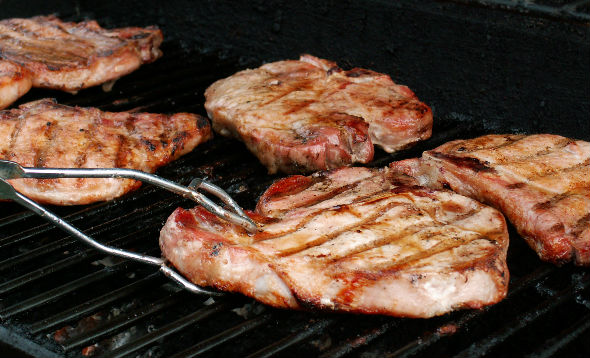That organic living is a conscious health choice
Provenance of Our Pork
The tradition of eating pork dates back to medieval times. In some cultures, it’s customary to feast on pork to ring in the New Year as it signifies wealth and prosperity - thanks to pigs’ rotund bellies.
A rich source of vitamin B complex, selenium, riboflavin, zinc, and heart healthy omega-3, lean trimmed pork also gets the tick of approval from the National Heart Foundation of Australia’s food rating programme.
One of the most versatile proteins around, pork is easily available at the local butcher or supermarket. But do you know what goes into the pork you put on your plate? Very often, farmers plump up their pigs with synthetic growth hormones or artificial drugs to increase their yields and bolster their bottom lines.
To get the most ecologically sustainable and healthy pork, your best bet would be to go organic. However, it can sometimes be expensive or difficult to purchase certified organic pork. This is because it’s almost impossible to produce commercial quantities of certified organic pork given the shortage of dietary feed supplements and the amount of stock required to sustain a healthy farm production.
If Not Organic, Then What?
There are other healthy alternatives if certified organic pork is not readily available. Free-range pork, for example, offers an ethically farmed option that makes buying pork more affordable.
Western Australian free-range pork producer Linley Valley follows strict standards set by farming certification body, Australian Pork Industry Quality Assurance Programme or APIQ®. The pigs are raised in superior conditions - they enjoy an active outdoor life, sleep in straw-lined shelters and are given premium, locally-sourced feed that is free from antibiotics. What this translates to is a better texture and greater flavours that you can taste with every bite.
Free-Range Pork on Your Fork?
Now that you know what kind of pork to buy, how should you cook it? Pork stir-fry, minced pork tortillas, braised pork belly, pork sausages, bacon, ham and pork cutlets are just some popular ways to serve up pork all year round.
For a great Sunday lunch, you can’t go wrong with roast pork with crackling and apple sauce, served with a healthy side of roast vegetables.
Here’s some tips to make a delicious pork roast:
- To get the perfect crackling, the secret is oil, salt and just the right amount of heat. Pat the rind dry with paper towels, score it, then massage a small amount of oil and salt into the scored rind. Pop the prepped pork into an oven, pre-heated to 220°C.
- Roast the pork at 220°C for 20 minutes, then lower the temperature to 180°C and cook it for 40 minutes per kilogram.
- Rest the roast under foil for approximately five to 10 minutes before serving. Enjoy!

Look for this logo!



























_1672804154.jpg)

_1611290459.jpg)